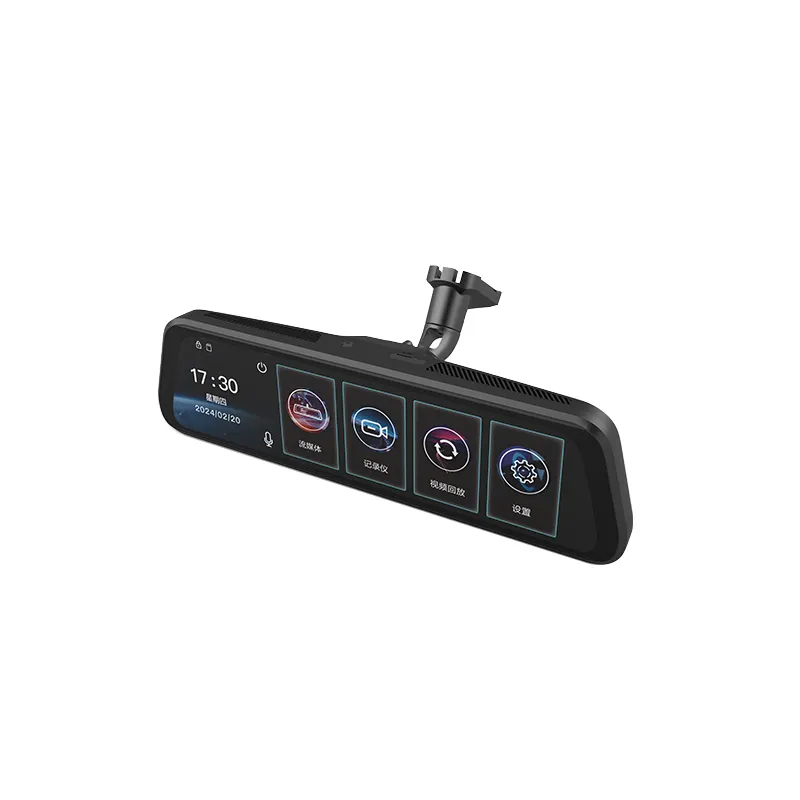Streemi kaardistamise põhielementide mõistmine
Põhitehnoloogia串voogluumise peale
Seadmete vahelise sujuva suhtlemise nõue on tänapäeval juba üsna oluline, eriti video edastamisel. Enamik süsteemidest toetub lahendustele nagu Miracast või Apple AirPlay. Need võimaldavad ühe ekraani sisu kohe kopeerida teisele, mis on oluline näiteks videote vaatamisel või hoiatuste kuvamisel sõidu ajal. Ülekande toimimine sõltub peamiselt kas Wi-Fi Direct ühendusest või tavapärasest koduvõrgust. Kvaliteet sõltub suurel määral internetiühenduse tugevusest antud hetkel. Mõned testid on näidanud, et kvaliteetne varustus suudab hoida viivitust väga madalamal. Viimeks mainitud tähendab, et viivitus jääb enamasti alla 100 millisekundi. Selline kiire reaktsioon on eriti oluline autodes, kus juht peab saama infot kiiresti. Näiteks tagasikäigu kaamerad, mis kuvatakse välispooli või nutikad armatuurlaudade süsteemid, mis näitavad liiklusolukorra muutusi. Sellise tehnoloogiaga saavad juhid visuaalset infot peaaegu kohe, ilma et peaks pikemalt teed vaatama.
Peamised eelised igapäevaste kasutajatele
Streamingi peegeldamine teeb elu lihtsamaks, sest see võimaldab inimestel saata asju telefonist suurematel ekraanidel ilma igasuguse muredeta. Inimestele meeldib sarjade vaatamine, mängimine ja rakenduste kasutamine nendel suurtel TV-ekraanidel, mitte aga nendega segadust tekitavate juhtmete ja ühenduste kasutamine. Ja see ei piirdu enam ainult kodu seinaga. Ka autotootjad on oma armatuurlaudadesse hakkanud paigaldama peegeldustehnoloogiat. Navigeerimiskaardid ilmuvad otse tuuliklaasi ekraanile ja tagasikäigu kaamerad kuvatakse keskmisel ekraanil, kui auto liigub tagurpidi. Mõne tööstusaruande kohaselt ütleb ligikaudu 70% juhtidest, et nad juhivad nendega peegeldusfunktsioonidega paremini. Kuid tegelikult oluline on see, kui lihtsaks muutub kõik tavainimestele, kes soovivad nautida meediat kusiganes, ilma et nad jääksid tehnilisse võrku.
Kriitilised valikukriteeriumid voojaamise seadmete jaoks
Sobivus Teie ökosüsteemiga
Peegeldusseadme valik muutub kiiresti keeruliseks, kui me ei kontrolli, kui hästi see sobib meie olemasoleva tehnilise seadmega. Enamik inimesi unustab sellest kuni hetkeni, mil nad proovivad kõik ühendada ja jäävad probleemide külge. Tuleb kaaluda, kas seade töötab tegelikult vanade nutitelefonide, laual olevate tahvelarvutite või isegi eelmisel aastal ostetud telefoni jaoks. Ühilduvus on oluline, sest süsteemid nagu iOS ja Android tegevad asju erinevalt. Mõned seadmed suudavad neid erinevusi ületada ja võimaldavad inimestel hõlpsasti lülituda seadmete vahel ilma pideva närtsimiseta. Inimesed, kes kulutavad aega uue varustuse sobitamiseks olemasoleva varustusega, on tulevikus vähemate peavaludega seotud. Nad veedavad vähem aega sellega, et mõista, miks midagi ei tööta, ja rohkem aega oma meelelahutuse või esitluste nautimisega kõigis oma ekraanides.
Tähtsad jõudluskriteeriumid
Peegeldusseadme toimivus mõjutab päris palju seda, mida kasutajad igapäevaelu jooksul kogevad. Resolutsioon on tänapäeval väga oluline, enamik seadmeid ulatuvad tavapärasest 1080p-st kuni 4K-ni. Kõrgema hinnaklassi mudelid on ekraanil lihtsalt palju selgemad. On ka viivituse probleem, millest paljud inimesed ei arvesta. See on põhimõtteliselt aeg, mis kulub sündmuse toimumise ja selle kuvumise vahel. Näiteks mängimisel või kaartide kasutamisel sõidu ajal muudab madal viivitus kogemuse sujuvast toimimisest ja tüütust viivitusest. Ühendustugevus ja andmete liikumise kiirus mängivad siin ka suurt rolli. Kõik, mis on alla 30 Mbps, tähendab parimal juhul katkendlikku videot. Reaalse maailma testitulemuste vaatamine aitab inimestel valida head toimivust omava varustuse. Tegelike toimivusspetsifikatsioonide põhjal tehtud mõistlikud valikud viivad praktikas palju paremini voolavus- ja peegelduskogemusteni.

Voordelemiste tüüpide uurimine
Kui sattuda streamingi ja ekraanite jagamise hardvari maailma, siis on mitmeid võimalusi. Siin on lähemalt vaadeldud kahte levinumat tüüpi.
Spetsialiseeritud streaming paigutused ja donglid
Võtke näiteks Chromecast ja Amazon Fire Stick – need väikesed seadmed tähistavad seda, mida me nüüd nimetame streamingpulgaks ja dongle’iteks, mis iga päevaga üha populaarsemaks muutuvad. Piisavalt kompaktne, et sobituks kuhu tahes, võimaldavad need lihtsalt TV-viia ja alustada erinevatelt platvormidelt erinevate programmide vaatamist. Enamik inimesi hindab nende odavust teiste võimalustega võrreldes ja kui lihtne on seadistusprotsess. Hiljutiste numbrite vaatamine annab meile ka huvitavaid teada: müüginumbrid näitavad ligikaudu 25-protsendilist aastast kasvu selles kategoorias, mis viitab selgelt tarbijate kasvavale huvi streamingu seadmete vastu, kes soovivad hõlpsat viisi oma lemmikseeriad ja filmid suurel ekraanil vaadata.
Autoteknoloogiale keskenduvad ekraanikopeerimise lahendused
Autotööstuse tehnoloogias on toimunud märkimisväärsed parandused tänu spetsiaalsetele peegelduslahendustele. Me räägime asjades, nagu näiteks traadita tagasidurkamerad ja uued seadmed, mis lähevad mööda juhi meelelahutusest ning samuti teevad liikluse ohutumaks. Paljudes tänapäevastes süsteemides on ehitatud salvekaamerad ja ekraanipeegeldusfunktsioonid, mis aitavad juhil paremini jälgida, mis toimub ümber sõiduki. Uuringud viitavad sellele, et autodega, millel on sellised süsteemid, juhtub vähem õnnetusi. Siiski tasub mainida, et enne kui keegi hüpataks selle tehnoloogia peale, peaks igaüks kontrollima, kas need uued võimalused sobivad kokku nende autoga, eriti armatuurlaua ja GPS seadmega. Sobimatuse probleemid võivad olla väga tüütavad, kui üritatakse installeerida kõik seda kallit varustust.
Parima Seadme Valik
Vajaduste Kohandamine Seadmete Võimetega
Õige peegeldusseadme valik algab sellega, et meie tegelikud vajadused võrrelda seadme võimalustega. Esimene asi, mida kontrollida, on see, kas keegi soovib põhiliselt midagi kodu meelelahutuseks või hoopis autokasutuseks. Selle põhipunkti selgeks mõistmine aitab läbi murda kõik segadused ja jääb vähem valikuid muretseda. Võtke näiteks videote voogedastus, mängimine või esitlused. Inimesed, kes valivad seadmeid, mis on loodud just nendeks ülesanneteks, saavutavad tavaliselt paremaid tulemusi. Kasutajate tagasiside näitab, et inimesed on palju rahulikumad, kui nad leiavad seadme, mis täpselt vastab nende vajadustele. Ärge unustage ka isiklikku maitset, mis loeb ka. Hea valik peaks sobima hästi isiklikku olukorda, mitte olema lihtsalt tehniliselt imeline, kuid igapäevaelus ebaotstarbekas.
Tulevikus turvaline investeering
Tehnoloogiasse raha investeerimine tasub pikemas perspektiivis siis, kui soovime oma seadmeid võimalikult hästi kasutada. Tuleb otsida seadmeid, mille puhul tehakse regulaarselt firmware'i uuendusi ja lisatakse uusi funktsioone, sest just need asjad aitavad meil järgida nii praegu kehtivaid vajadusi kui ka tulevasi arendusi, näiteks suuremaid ekraanilahutusi, millest kõik räägivad. Kui seade suudab areneda, ei pea me seda nii sageli asendama. Enamik tehnoloogiaeksperte soovitab enne ostu otsustamist vaadata, mis on hetkel trendis, ja lugeda läbi kasutajate tagasiside internetis. Inimesed, kes valida oma seadmeid tulevikku silmas pidades, säästavad seadme omamise ajal kokku rohkem raha. See on loogiline, kui mõista, kui palju vaeva ja kulusid tekib pidevalt uute asjade ostmisel vana asja asemel, mis liiga kiiresti aegunud on.
KKK
Mis on voogesaitmise peegeldus-tehnoloogia?
Voogesaitmise peegeldus-tehnoloogia kasutab protokolle nagu Miracast ja AirPlay reaalajas ekraanipeegelduseks Wi-Fi Directi või koduühiskonnas, võimaldades seadmete vahel seda, et kommunikeerida liigutamatult.
Kuidas parandab voogesaitmise peegeldus-tehnoloogia autotööstuses rakendusi?
See tehnoloogia toetab reaalajas visualiseerimist, mis on oluline funktsioonide jaoks nagu tagavaatluse kaamera kuvad ja intelligentsed joonestikud, mis on hädavajalikud sõidukite turvalisuse ja navigatsiooni parandamiseks.
Milliseid aspekte peaksin arvesse võtma peegeldusseadme valimisel?
Arvestage oma olemasolevate seadmete sobivusega, jõudlusega, sealhulgas resolutsiooniga ja viivitusega ning seadmete võimetega, mis vastavad teie spetsiifilistele vajadustele meelelahutuse või autotehnoloogia kasutamiseks.
Miks on tulevikku suunatud plaanimine oluline peegeldusseadmete valimisel?
Tulevikku orienteeritud seadmed kohanevad muutuva tehnoloogia standarditega, pakkudes tarkvara värskendusi ja funktsiooniparemid, et tagada pikaajaline kestetlus ja suurem investeeringuväärtus.



